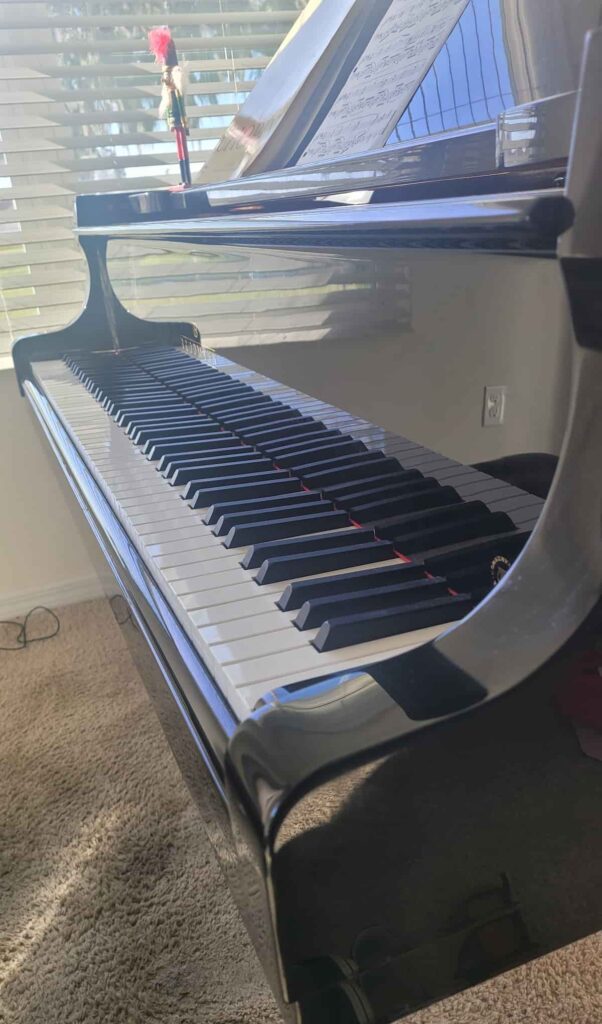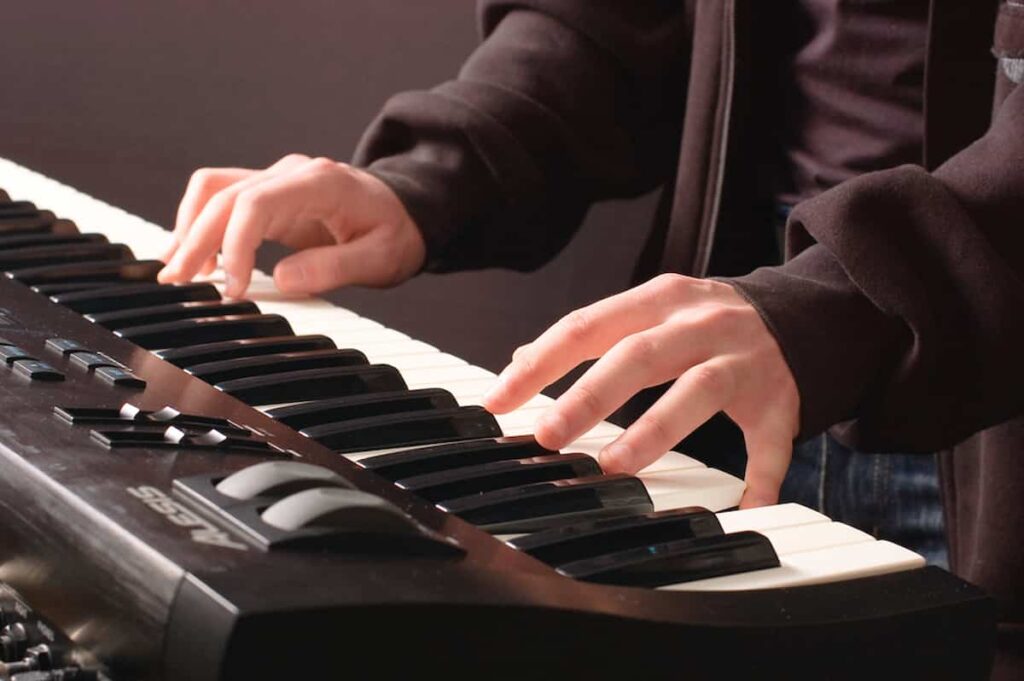As an Amazon Associate I earn from qualifying purchases.
If you’re new to the piano, you’ve likely encountered a passage of music in which the composer asks for a crescendo. Our initial thought is that it’s impossible to do. We’re not playing wind instruments, after all. But this still gets many wondering; can pianos crescendo?
Piano’s can’t crescendo by holding a single note; however, the sound can be manipulated to create a crescendo effect across a series of notes. Gradually applying more weight to the key through a melodic passage. Harmonic passages can also be manipulated as long as there is repetition. Adding a sustained pedal can further enhance the crescendo effect.
While holding down a single key doesn’t technically create a crescendo, there are ways to make it happen with good technique and careful thought across a series of notes. We’ll dive into why pianos can’t crescendo in a traditional sense and explain how to properly do it on both traditional pianos and digital keyboards.
Want to Learn Piano?Click Here

Why Pianos Can’t Crescendo In The Traditional Way
In simple terms, crescendo means to gradually increase in volume.
While pianos can crescendo, they can’t do this by just holding down a single note. And that’s where things get tricky because some would have you think they can’t do this at all.
This all comes down to the mechanics of the instrument. When a single note or chord is pressed, all you hear is one volume level. It takes a series of actions to do it properly and usually requires a series of notes and chords to happen successfully.
This is must different than a wind instrument which you can use the air to control the sound. The more force you put behind the air, the louder the instrument will be. So, with those kind of instruments you can get away with it on a single note.
Pianos are string instruments, but they’re also percussion instruments too. The pianist presses the key; the hammer is activated, strikes the string the sounds are produced. The sounds die off as soon as that key is let go of.
So, if you think of the piano like a drum for a minute, you’ll get a better idea of why it can’t crescendo off a single strike of a note. The pianist drops weight into the key; at that moment, it’s what the piano will produce; nothing more, nothing less.
This means whole notes, quarter notes, and single notes, in general, won’t magically increase in volume just because you hold the key.
How Do Professional Pianists Do It?
Pianos can’t crescendo in a normal way, yet we still hear professional pianists do this all the time in performances. But how?
To create a true crescendo effect, a pianist has to make multiple attacks to the key at various weights.
The idea is simple; the more you gradually increase the weight on each press of the key, the more volume you get. This creates a gradual incline in the sound produced, and so in a sense, you can create the crescendo that way.
It doesn’t have to be the same notes either, but it can be a melodic passage. The notes don’t have to be long either; this can be done with any articulation, whether it’s staccato, legato, or even accented notes. The idea is to carefully create this through careful calculations. Micro adjustments to each attack is how the best do it.
What About Crescendos On Digital Keyboards?
Although a traditional, upright, or grand piano can’t technically crescendo a single note, digital pianos are a different story. Depending on the sound patch used, you can crescendo on digital keyboards and synthesizers without the need to manipulate the sound.
There are many ways to go about it. For example, some string instrument patches have the crescendo setting already built into them. This means the pianist has to press down and hold the key, and the technology does the rest.

Some will do the following:
- Crescendo and maintain a loud volume
- Crescendo and decrescendo
- Crecresendo and decrescendo and then repeat this on a loop
Some sound patches have limits, and the note will cut off after a few beats. Sometimes that can be changed through deeper settings, but it depends on that individual keyboard. This means if you have a passage that requires the note crescendo for a longer period, then it’ll be possible.
The most flexible ones would be synthesizers by brands such as Korg and Yamaha.
For the most part, crescendo effects are mostly limited to string and experimental sounds. However, some digital keyboards offer this feature on normal piano sounds. Other times, the crescendo needs to be done manually by the pianist.
Usually, there will be a knob at the piano’s top left or right corner. Sometimes, two include the modulation wheel (this changes the pitch) and a volume wheel (this controls the crescendo). The only problem with this is that the pianist has to use one of their hands to control the wheel while simultaneously playing the note.
Depending on the passage of music being played, this can be incredibly inconvenient. If you’re tech-savvy, though, some of these can be controlled. Computer with presets. But this requires a lot of attaching specific notes to the volume wheel and is usually only worth some of the hassle.
Still, I also wanted to cover digital keyboards in this since many of us have them instead of traditional pianos.
Hello & thanks for stopping by! I’m a professional concert pianist and piano instructor. In the United States, I’ve given successful performances in several places including New York, Florida, Connecticut, & New Jersey, I have also performed internationally in Italy and made my Carnegie Hall debut in 2014. I enjoy blogging about the piano, the art of performance, general music, current events and the latest in music production.
